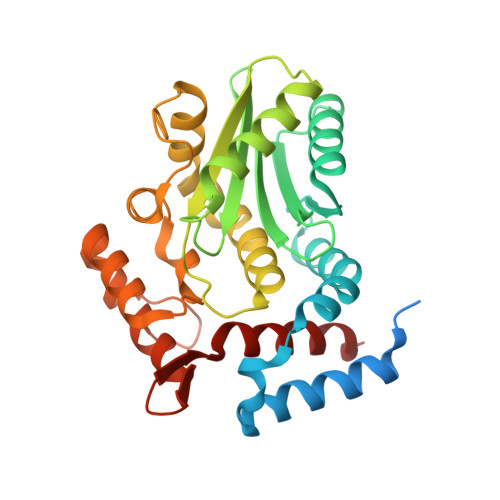Structural Analysis of the Bacterial Effector AvrA Identifies a Critical Helix Involved in Substrate Recognition.
Labriola, J.M., Zhou, Y., Nagar, B.(2018) Biochemistry 57: 4985-4996
- PubMed: 30025209
- DOI: https://doi.org/10.1021/acs.biochem.8b00512
- Primary Citation of Related Structures:
6BE0 - PubMed Abstract:
Bacterial effector proteins are essential for the infection and proliferation of pathogenic bacteria through manipulation of host immune response pathways. AvrA is a Salmonella effector that belongs to the YopJ family of acetyltransferases, which suppresses c-JUN N-terminal kinase (JNK) signaling in mammals through acetylation of mitogen-activated receptor kinase kinases 4 and 7 (MKK4/7). Interestingly, there are two paralogues of AvrA that differ by only a single internal leucine residue, which when absent (AvrA ΔL140 ) abrogates the ability to suppress JNK signaling. Here, we present the first crystal structure of a bacterial effector from an animal pathogen, AvrA ΔL140 , accompanied by a thorough biophysical characterization of both AvrA variants. The structure in complex with inositol hexaphosphate and coenzyme A reveals two closely associated domains consisting of a catalytic core that resembles the CE clan peptidases and a wedge-shaped regulatory region that mediates cofactor and substrate binding. The loss of the putative function of AvrA ΔL140 is due to its inability to interact with MKK4/7, which ultimately arises from an altered conformation of a critical helix adjacent to the active site that harbors L140. These results provide general insights into substrate recognition across the YopJ family of acetyltransferases.
Organizational Affiliation:
Department of Biochemistry and Groupe de Recherche Axé sur la Structure des Protéines , McGill University , Montreal , QC H3G 0B1 , Canada.
















